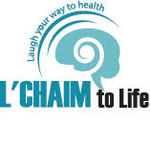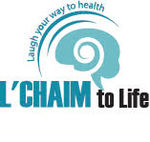
Yitzhak is a lively, friendly, Israeli 42-year-old father and Rabbi that teaches young and impressionable children. He is a religious man who is addicted to smoking. He wants to quit, and has tried nicotine patches, nicotine gum, and other conventional approaches, but always ended up going right back to smoking. Finally he came to me.
I decided to use the Meta-program process (a method that clarifies and improves thought processes) to help me understand him better. Then I could decide on the appropriate therapy. So we start:
Q. Do you consider yourself to be more of a thinker or more of a doer?
A. I would have to call myself a doer. Maybe that’s because I have so much to do – I have several children, and I also am a Rabbi. I feel that I’m always busy to the hilt, so I just have to keep moving to get things done.
Q. In your job and at home, if you have a choice, how do you like to do things? By yourself or together with others?
A. I’m the independent type. I’ve been a household head, a husband, a father and a teacher for years, and I’m pretty confident in all those roles. Of course I’m respectful toward my superiors at work, but I really don’t appreciate it when they try to offer unsolicited guidance. At home it's the same: I have systems that work well, and if I feel I need help or advice in dealing with things in the house or with the kids, I’ll ask for it. No one but me knows what I really need.
As we continued to speak along these lines, I understood how he sees his life. As we went on and I learned more, I worked out that he smokes because of the stress in his life. Besides all his present burdens, he told me how he was severely traumatized when he was a young boy. Soon I was ready to begin correcting the stress that the memory was causing him.
Eventually we will get to techniques called “changing the past” and “re-invent yourself,” but we start with the “time line” technique.
I have the patient stand up with eyes closed and ask him to picture a time line, and then to show me where the past, the present, and the future are. “Point to each one,” I tell him, “and show me which direction it’s in.”
When I said “past,” Yitzhak pointed behind himself. When I said “present,” he pointed down, next to himself. “Future” was straight in front of himself. With these symbolic directions established, we were able to step back into his past to correct the damage (“changing the past”), and then walk back into the present to enjoy health, and then look into the future to see how enjoyable it will be.
As we continue talking, I find that Yitzhak is visual/kinesthetic: he thinks in terms of images and sensations. So I decide to use the “circle of excellence” technique. I asked him to imagine how it will feel when he stops smoking, and to picture how he will have more time for things he wants to do. Next he envisages how it will be when he does not need to run and hide every few minutes for a smoke. Even a little thing can make a powerful vision, so I ask him to picture finally having the money to buy the lotion he wants for his dry hands.
Now we began to have greater motivation. Next I wanted to be very specific with our goal, so I asked Yitzhak to think about how he pictured overcoming his problem.
Q. What made you decide to see me about your smoking habit?
A. I’m disgusted with myself for hiding my smoking from my family. Living this double life as a smoker is probably a worse experience than quitting smoking would be. I’ve heard and read a lot about the effectiveness of NLP, and so I decided to give it a try.
Q. You need to remember that “try” is a negative word; it means you might not succeed.
A. All right, let’s say I decided to go for it.
Q. Can you tell me how far you want to go?
A. My main goal is simple: I want to walk out of here as a non-smoker, and I want it to happen quickly, because my smoking is affecting my day-to-day life in so many negative ways, not to mention what it’s doing to my health!
Q. What would you consider some signs of success?
A. For starters, I guess I would want to see that I’ve stopped smoking and that I don’t get a headache or start to feel nervous or jittery or depressed.
This sounds like a lot to achieve, but now we moved on to the “re-invent yourself” technique. I took Yitzhak back ten years into his past, and we catalogued all of his successes during those years. Finally we took all those successes into his vision of the future.
It took us only ten days until Yitzhak was no longer having headaches and jitters. After three weeks of therapy he was not at all interested in cigarettes any more.
Sounds simple? Thinking anyone can accomplish this? We need to remember: when your car has a transmission problem, you don’t go to your brother-in-law, you go to your mechanic! So when you’re looking for NLP treatment, don’t go to an amateur.
By: Reuven Weinreb, NLP Master Practitioner & Trainer (DON’T LIMIT YOUR CHALLENGES, CHALLENGE YOUR LIMITS)
If you have any comments or questions please feel free to contact me at [email protected] 050.410.5131 or https://weinrebreuven.wixsite.com/lchaim-to-life
* I have changed the patient’s name and personal information to insure patient-practitioner confidentiality


